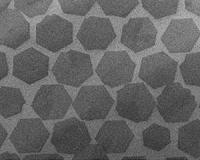 |
Raleigh, NC (SPX) May 27, 2011 Researchers from North Carolina State University have developed two new techniques to help maximize the performance of multi-core computer chips by allowing them to retrieve data more efficiently, which boosts chip performance by 10 to 40 percent. To do this, the new techniques allow multi-core chips to deal with two things more efficiently: allocating bandwidth and "prefetching" data. Multi-core chips are supposed to make our computers run faster. Each core on a chip is its own central processing unit, or computer brain. However, there are things that can slow these cores. For example, each core needs to retrieve data from memory that is not stored on its chip. There is a limited pathway - or bandwidth - these cores can use to retrieve that off-chip data. As chips have incorporated more and more cores, the bandwidth has become increasingly congested - slowing down system performance. One of the ways to expedite core performance is called prefetching. Each chip has its own small memory component, called a cache. In prefetching, the cache predicts what data a core will need in the future and retrieves that data from off-chip memory before the core needs it. Ideally, this improves the core's performance. But, if the cache's prediction is inaccurate, it unnecessarily clogs the bandwidth while retrieving the wrong data. This actually slows the chip's overall performance. "The first technique relies on criteria we developed to determine how much bandwidth should be allotted to each core on a chip," says Dr. Yan Solihin, associate professor of electrical and computer engineering at NC State and co-author of a paper describing the research. Some cores require more off-chip data than others. The researchers use easily-collected data from the hardware counters on each chip to determine which cores need more bandwidth. "By better distributing the bandwidth to the appropriate cores, the criteria are able to maximize system performance," Solihin says. "The second technique relies on a set of criteria we developed for determining when prefetching will boost performance and should be utilized," Solihin says, "as well as when prefetching would slow things down and should be avoided." These criteria also use data from each chip's hardware counters. The prefetching criteria would allow manufacturers to make multi-core chips that operate more efficiently, because each of the individual cores would automatically turn prefetching on or off as needed. Utilizing both sets of criteria, the researchers were able to boost multi-core chip performance by 40 percent, compared to multi-core chips that do not prefetch data, and by 10 percent over multi-core chips that always prefetch data.
The paper, "Studying the Impact of Hardware Prefetching and Bandwidth Partitioning in Chip-Multiprocessors," will be presented June 9 at the International Conference on Measurement and Modeling of Computer Systems (SIGMETRICS) in San Jose, Calif. The paper was co-authored by Dr. Fang Liu, a former Ph.D. student at NC State. The research was supported, in part, by the National Science Foundation.
"Studying the Impact of Hardware Prefetching and Bandwidth Partitioning in Chip-Multiprocessors" Authors: Fang Liu and Yan Solihin, North Carolina State University
Share This Article With Planet Earth
Related Links North Carolina State University Computer Chip Architecture, Technology and Manufacture Nano Technology News From SpaceMart.com
 New electronics material closer to commercial reality
New electronics material closer to commercial realityWest Lafayette, IN (SPX) May 26, 2011 Researchers have developed a method for creating single-crystal arrays of a material called graphene, an advance that opens up the possibility of a replacement for silicon in high-performance computers and electronics. Graphene is a one-atom-thick layer of carbon that conducts electricity with little resistance or heat generation. The arrays could make possible a new class of high-speed tr ... read more |
|
| The content herein, unless otherwise known to be public domain, are Copyright 1995-2010 - SpaceDaily. AFP and UPI Wire Stories are copyright Agence France-Presse and United Press International. ESA Portal Reports are copyright European Space Agency. All NASA sourced material is public domain. Additional copyrights may apply in whole or part to other bona fide parties. Advertising does not imply endorsement,agreement or approval of any opinions, statements or information provided by SpaceDaily on any Web page published or hosted by SpaceDaily. Privacy Statement |